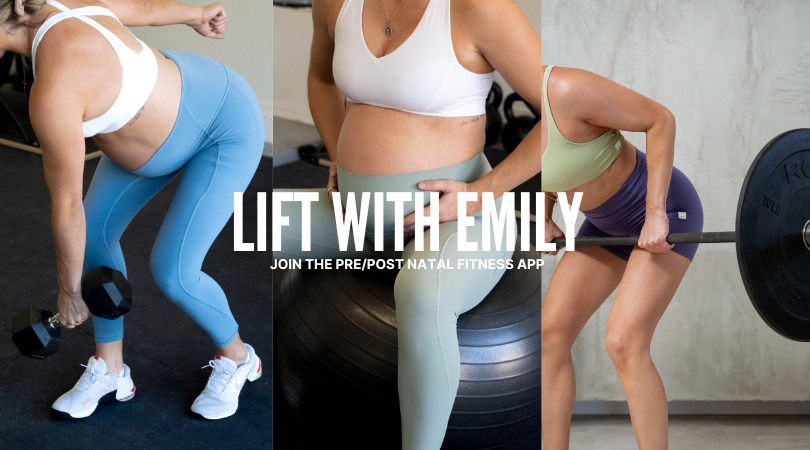After pregnancy and birth, many new moms focus on core rehab, glute strength, or rebuilding endurance— but there’s a key muscle group that often gets overlooked: the adductors, or inner thighs.
These muscles do far more than we give them credit for. They support pelvic stability, help coordinate with the core and pelvic floor, and even play a big role in glute function. If you’ve returned to movement but are still experiencing instability, pressure issues, or difficulty with core or single-leg strength — your adductors may be the missing link.
Let’s explore why adductor strength matters and how to progress it postpartum with purpose.
Why Adductor Strength Matters Postpartum
During pregnancy, the pelvis widens and the body adapts to a shifting center of gravity. The adductors —especially when underused or weakened — can lose their coordination with the core and pelvic floor, affecting your entire foundation.
When functioning well, the adductors:
- Work in synergy with the pelvic floor to create co-contraction and pressure management
- Help stabilize the pelvis and spine during walking, lifting, and transitional movements
- Support the glutes in maintaining balance, strength, and power — especially in single-leg tasks
- Improve the core system’s ability to manage intra-abdominal pressure (important for diastasis healing and prolapse recovery)
In short: strong, coordinated adductors = a stronger, more resilient postpartum body.
How to Progress Adductor Strength Postpartum
Just like you wouldn’t start postpartum core training with crunches, you shouldn’t jump into deep lateral lunges or heavy lifts without first rebuilding the foundational connection between your inner thighs, core, and pelvic floor. That’s where these three progressive phases come in.
Early Phase: Awareness, Breath, and Isometric Engagement
Goal: Lightly activate the adductors and build coordination with breath and pelvic floor engagement.
This phase is all about waking up the system. You’re not trying to max out strength — you’re building awareness and laying the foundation for deeper strength later on. The adductors have to relearn how to work in harmony with the glutes, diaphragm, and pelvic floor. These are great early exercises to start with, even in the first few weeks postpartum (with clearance):
Exercises:
- Glute Bridge with Adductor Squeeze
Place a small ball, pillow, or yoga block between your knees while bridging. This helps activate your glutes and inner thighs together, promoting full pelvic stability.
- Side lying hip lift with adductor squeeze
Come into a side lying position with your knees bent and a ball or block between your thighs. The side-lying hip lift with adductor squeeze builds early-phase inner thigh activation while reinforcing glute-adductor co-contraction. It also promotes pelvic alignment and deep core engagement without requiring full weight-bearing
Benefits:
- Builds mind-muscle connection
- Encourages co-contraction of pelvic floor and inner thigh
- Prepares body for dynamic movement
Mid Phase: Controlled Dynamic Strength
Goal: Strengthen the adductors through range while maintaining core control and pelvic stability.
Once you have a baseline of isometric strength and breath coordination, it’s time to add more dynamic movement. This phase continues to challenge the adductor-core connection and begins to build strength through a greater range of motion.
Exercises:
- Leg Lowers with Block Squeeze
Hug a block between your knees while lowering one leg at a time. This challenges your trunk to stay stable and brings the adductors into deeper coordination with the core.
- Side-Lying Adductor Lift-Off
Lying on your side, lift the bottom leg while keeping everything else stable. This isolates the adductors and improves control around the pelvis and hip.
Benefits:
- Improves eccentric and concentric strength
- Enhances pelvic control during movement
- Prepares for more functional and weight-bearing activity
Advanced Phase: Loaded and Lengthened Strength
Goal: Train the adductors under load, through stretch, and in more functional movement patterns.
This phase mimics real-life and athletic demands. Adductors don’t just squeeze in — they help control deceleration and re-stabilization during running, lifting, and directional changes. Training them in lengthened positions and under external load builds resilience and helps prevent injury or instability.
Exercises:
- Slider Lateral Lunge
Use a towel or slider under one foot to slowly slide out to the side as you sit back into the stable leg. This eccentrically strengthens the adductors while improving hip mobility, pelvic control, and single-leg stability through a lengthened range of motion
- Copenhagen Plank (Intro with Knee Support)
This side plank variation trains isometric adductor strength, core control, and pelvic stability. Start with the bottom leg supported and progress to more advanced versions.
Benefits:
- Builds load tolerance and end-range strength
- Improves resilience for impact (e.g. running, jumping)
- Reinforces adductor-glute coordination in full-body movement
Final Thoughts
Adductor strength is a cornerstone of postpartum recovery and one that often gets missed. Rebuilding this muscle group supports your pelvic floor, deep core system, glutes, and overall lower body strength.
Whether you’re newly postpartum or months (or years) into your recovery, don’t skip these progressions. They’re not just inner thigh exercises — they’re a pathway back to stability, power, and confidence in your body.
Want guided workouts that include this progression and more?
Join my Return to Strength Postpartum program for intentional, full-body training that supports your recovery every step of the way.

I’m deeply passionate about helping women feel strong, informed, and confident through every stage of motherhood. You deserve more than just a list of do’s and don’ts or generic modifications. With years of hands-on coaching across all kinds of athletes and clients, I blend real-world experience with specialized pre and postnatal knowledge to create strength programs that go far beyond basic adjustments. This is high-level, accessible training - built for your body, your season, and your goals
EXPLORE MORE POSTS